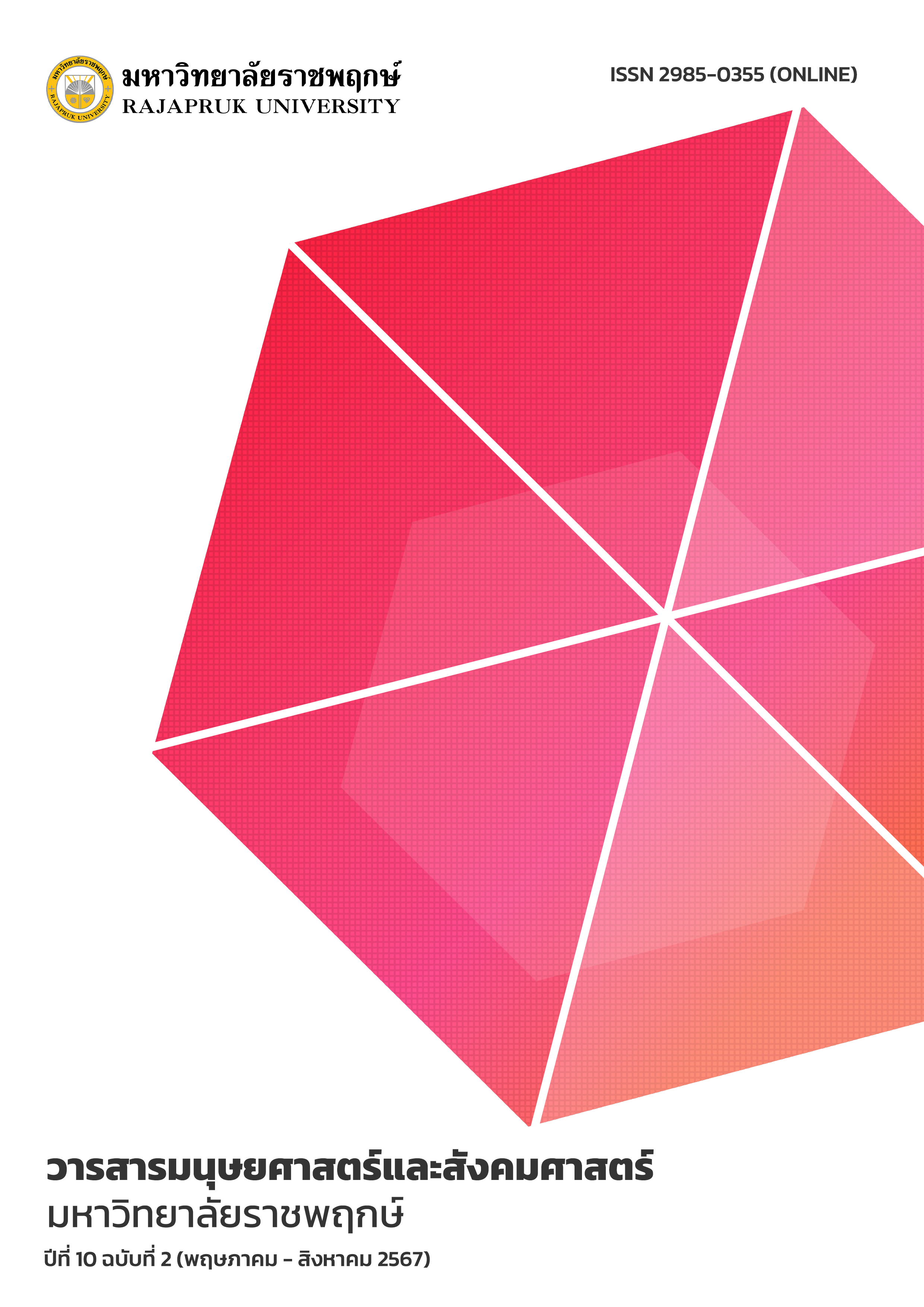The Relationship among Work-Life Balance, Workplace Spirituality and Employee Performance
Main Article Content
Abstract
ABSTRACT
The Objective of this research were to; 1) study the level of work-life balance, workplace spirituality, and employee performance and 2) analyze the effects of work-life balance and workplace spirituality on employee performance. The sample consisted of 264 employees from a supplement manufacturer in Chon Buri. A questionnaire was used to collect data through proportionate stratified sampling. The statistics used in the research were frequency, percentage, mean, standard deviation, skewness, kurtosis, and the structural equation models.
The results of the research revealed that; 1) The level of work-life balance, workplace spirituality and employee performance is at a high level. Mean and standard deviation were, =4.05, SD=0.59; =4.15 , SD=0.58 and =4.17, SD=0.55. 2) The path analysis results show that work-life balance and workplace spirituality have a significant, direct positive impact on employee performance. The variance of the work-life balance and workplace spirituality variables explains 63% of the variance of employee performance.
Article Details
References
จิรกฤต จินดาสวัสดิ์ ญาณิศา ภัทรสิริรัชต์ ณัฐนันท์ มนตรีพิศุทธิ์ และ จุฑามาศ ทวีไพบูลย์วงษ์. (2562). อิทธิพลของจิตวิญญาณในการทำงานและความผูกพันของพนักงานที่มีต่อผลการปฏิบัติงานของพนักงานในอุตสาหกรรมผลิตชิ้นส่วนอิเล็กทรอนิกส์ในเขตนิคมอุตสาหกรรมแหลมฉบัง จังหวัดชลบุรี. วารสารสุทธิปริทัศน์, 33(107): 223-233.
ธานินทร์ ศิลป์จารุ. (2557). การวิจัยและการวิเคราะห์ข้อมูลทางสถิติด้วย SPSS และ Amos. กรุงเทพฯ: เอส อาร์ พริ้นติ้ง แมสโปรดักส์.
Best, J. W., & Kahn, J. V. (2006). Research in Education. 10th ed. Cape Town: Pearson Education Inc.
Bonnin, S. O., Blahopoulou, J., Buades, M. E. G., & Juan, M. M. (2022). Work-life balance satisfaction in crisis times: from luxury to necessity–The role of organization’s responses during COVID-19 lockdown. Personnel Review. DOI: 10.1108/PR-07-2021-0484.
Byrne, B. M. (2010). Structural Equation Modeling with AMOS: Basic Concepts. Applications, and Programming. New York: Routledge.
Cortina, J. M. (1993). What is coefficient alpha? An examination of theory and applications. Journal of Applied Psychology, 78(1): 98.
Fornell, C., & Larcker, D. F. (1981). Evaluating structural equation models with unobservable variables and measurement error. Journal of Marketing Research, 18(3): 39-50.
Frone, M. R. (2003). Work-family balance. In J. C. Quick, & L. E. Tetrick (Eds), Handbook of Occupational Health Psychology, (pp. 143-162). Washington, DC: American Psychological Association.
Greenhaus, J. H., Collins, K. M., & Shaw, J. D. (2003). The relation between work-family balance and quality of life. Journal of Vocational Behavior, 63: 510-531.
Hair, J. F., Black, W. C, Babin, B. J., & Anderson, R. E. (2010). Multivariate Data Analysis. 7th ed. Upper Saddle River, NJ: Prentice Hall.
Hyman, J., & Summers, J. (2004). Lacking balance? Work-life employment practices in the modern economy. Personnel Review, 33(4): 418-429.
Jena, L. K. (2021). Does workplace spirituality lead to raising employee performance? The role of citizenship behavior and emotional intelligence. International Journal of Organizational Analysis. DOI: 10.1108/IJOA-06-2020-2279.
Kline, R. B. (2011). Principles and Practices of Structural Equation Modeling. 3rd ed. New York: The Guilford Press.
Kristof-Brown, A. L., Zimmerman, R. D., & Johnson, E. C. (2005). Consequences of individuals’ fit at work: A meta-analysis of person-job, person-organization, person-group, and person-supervisor fit. Personnel Psychology, 58(2): 281-342.
Mendis, M. D. V. S., & Weerakkody, W. A. S. (2017). The impact of work life balance on employee performance with reference to telecommunication industry in Sri Lanka: A mediation model. Kelaniya. Journal of Human Resource Management, 12(1): 72-100.
Milliman, J., Czaplewski, A. J., & Ferguson, J. (2003). Workplace spirituality and employee work attitudes: An exploratory empirical assessment. Journal of Organizational Change Management, 16(4): 426-447.
Pradhan, R. K., & Jena, L. K. (2017). Employee performance at workplace: Conceptual model and empirical validation. Business Perspective and Research, 5(1): 69-85.
Rego, A., Pina, E. Cunha, M., & Souto, S. (2007). Workplace spirituality, commitment, and self‐reported individual performance: An empirical study. Management Research, 5(3): 163-183.
Sonnentag, S., & Frese, M. (2002). Performance concepts and performance theory. In S. Sonnentag (Ed.), Psychological Management of Individual Performance: 1-25.
Stevens, J. P. (1992). Applied Multivariate Statistics for the Social Sciences. 2nd ed. NJ: Lawrence Erlbaum Associates. Hillsdale.


